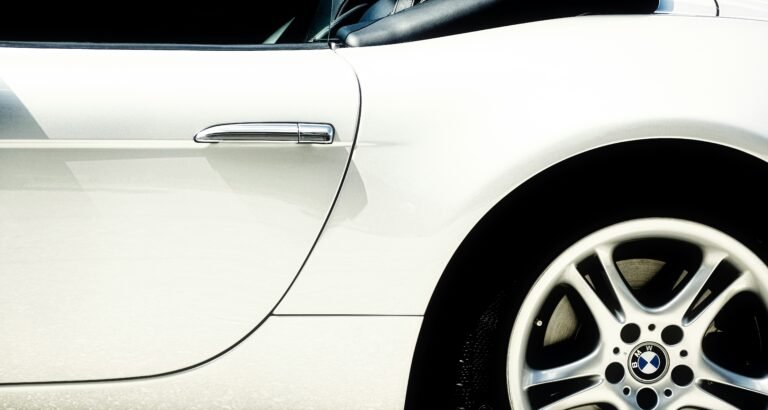Discover the ultimate car waxes that deliver a stunning mirror-like shine to enhance your vehicle’s appearance.
There’s nothing quite like the gleam of a perfectly waxed car. High-performance car waxes not only enhance the aesthetic appeal of your vehicle but also offer protection against the elements. Whether you’re a car enthusiast or simply want your vehicle to look its best, understanding the nuances of car waxes is essential to achieving that enviable shine.
In this article, we’ll delve into the world of high-performance car waxes, exploring their benefits and features. You’ll learn why choosing the right wax can significantly impact your car’s appearance and longevity. By the end, you’ll be equipped with the knowledge to select the best product for your needs.
We’ll cover the types of car waxes available, how to apply them effectively, and tips for maintaining that flawless finish. Whether you’re considering natural carnauba wax or a synthetic polymer option, we’ve got you covered. Let’s dive in!
Table of Contents
Understanding High-Performance Car Waxes
High-performance car waxes are specially formulated products designed to provide a superior shine and protection to your vehicle’s paintwork. Unlike standard waxes, these products often contain advanced polymers or ceramic coatings that enhance durability and gloss.
- High-performance car waxes often contain synthetic polymers for increased durability.
- These waxes can protect against UV rays, rain, and other environmental factors.
- They are ideal for car enthusiasts who want a showroom finish.
Key Features and Capabilities of Car Waxes
When selecting a car wax, it’s important to understand the different features and capabilities that can enhance your vehicle’s appearance and protection.
- UV Protection: Protects the paint from harmful sun exposure.
- Hydrophobic Properties: Causes water to bead off, reducing water spots.
- Longevity: High-performance waxes can last months, reducing the need for frequent reapplication.
Comparing Different Types of Car Waxes
Car waxes come in various formulations, each offering unique benefits. Here’s a comparison of the most popular types:
| Feature/Type | Benefits | Best For | Considerations |
|---|---|---|---|
| Carnauba Wax | Natural shine, deep gloss | Show cars, enthusiasts | Requires more frequent application |
| Synthetic Polymer Wax | Long-lasting, easy to apply | Daily drivers, all-weather protection | May lack the depth of natural waxes |
| Ceramic Wax | Exceptional durability, extreme protection | Luxury vehicles, harsh conditions | Higher cost, more complex application |
Choosing the Right Car Wax for Your Vehicle
Selecting the right car wax depends on your vehicle’s needs and your personal preferences. Here’s how to make an informed choice:
- Consider the climate and environmental conditions where you drive your vehicle.
- Evaluate the level of protection you need based on how often you drive.
- Decide on the type of finish you prefer, whether it’s a deep gloss or a wet look.
Applying Car Wax for Optimal Results
Applying car wax correctly is crucial to achieving the best results. Follow these steps for a flawless finish:
- Wash and dry your vehicle thoroughly to remove any dirt or debris.
- Apply a small amount of wax to a foam applicator pad and work in sections.
- Buff the wax off with a microfiber towel, revealing a shiny, protected surface.
Maintaining the Shine: Care and Maintenance
Once you’ve achieved that mirror-like shine, it’s essential to maintain it with regular care.
- Wash your car regularly with a pH-balanced shampoo to avoid stripping the wax.
- Reapply wax every few months to maintain protection and shine.
- Store your vehicle in a garage or use a car cover to protect it from the elements.
Expert Tips and Recommendations
- Use a clay bar before waxing to remove embedded contaminants for a smoother finish.
- Apply wax in the shade to prevent it from drying too quickly, which can make removal difficult.
- Test a small area first to ensure compatibility with your car’s paint.
- Invest in a quality microfiber towel for buffing to avoid scratches.
Common Questions About High-Performance Car Waxes: Achieve a Mirror-Like Shine for Your Vehicle
Find answers to frequently asked questions about choosing and using high-performance car waxes.
- Q: How often should I wax my car?
A: Generally, you should wax your car every 3-4 months, but this can vary based on driving conditions and wax type. - Q: Can I use car wax on a newly painted car?
A: It’s best to wait at least 30 days for new paint to cure before applying wax. - Q: What is the difference between wax and polish?
A: Wax protects the paint, while polish is used to remove imperfections and prepare the surface for waxing. - Q: Is synthetic wax better than natural wax?
A: It depends on your needs; synthetic wax offers durability, while natural waxes provide a deeper shine. - Q: Can I apply wax with a machine polisher?
A: Yes, using a machine polisher can save time and provide even application, but ensure you use the correct pad and settings.
Conclusion
High-performance car waxes are an excellent investment for anyone looking to enhance their vehicle’s appearance and protection. With the right product and application, you can achieve a stunning mirror-like shine that lasts.
Whether you choose a natural or synthetic option, ensure it suits your car’s needs and your maintenance routine. Take the time to apply it correctly, and your vehicle will thank you with a beautiful, long-lasting finish.
Ready to achieve a mirror-like shine for your vehicle? Check out this essential high-performance car wax to start your journey to a stunning finish: [Affiliate link placeholder]
As an Amazon Associate I earn from qualifying purchases.
Explore this topic: Car Waxes
Last updated on August 7, 2025






